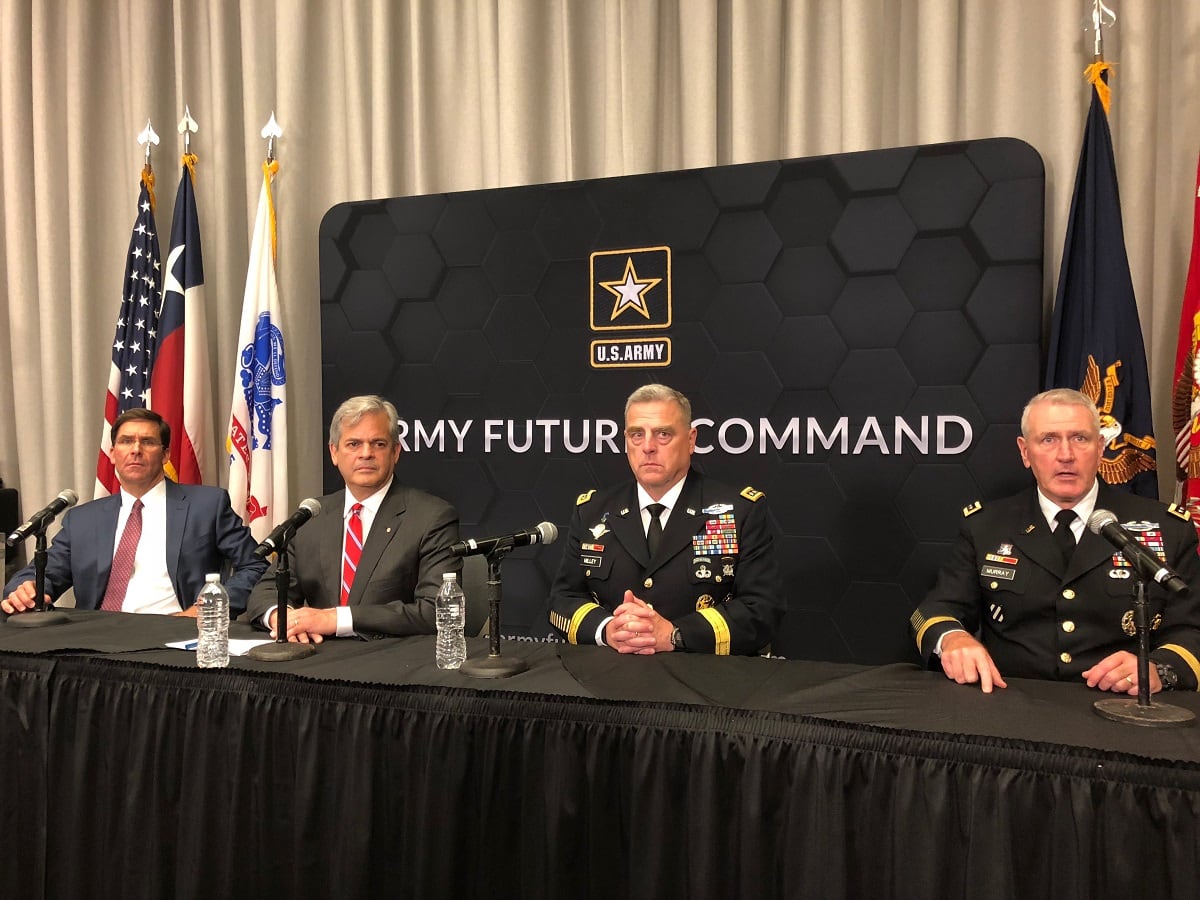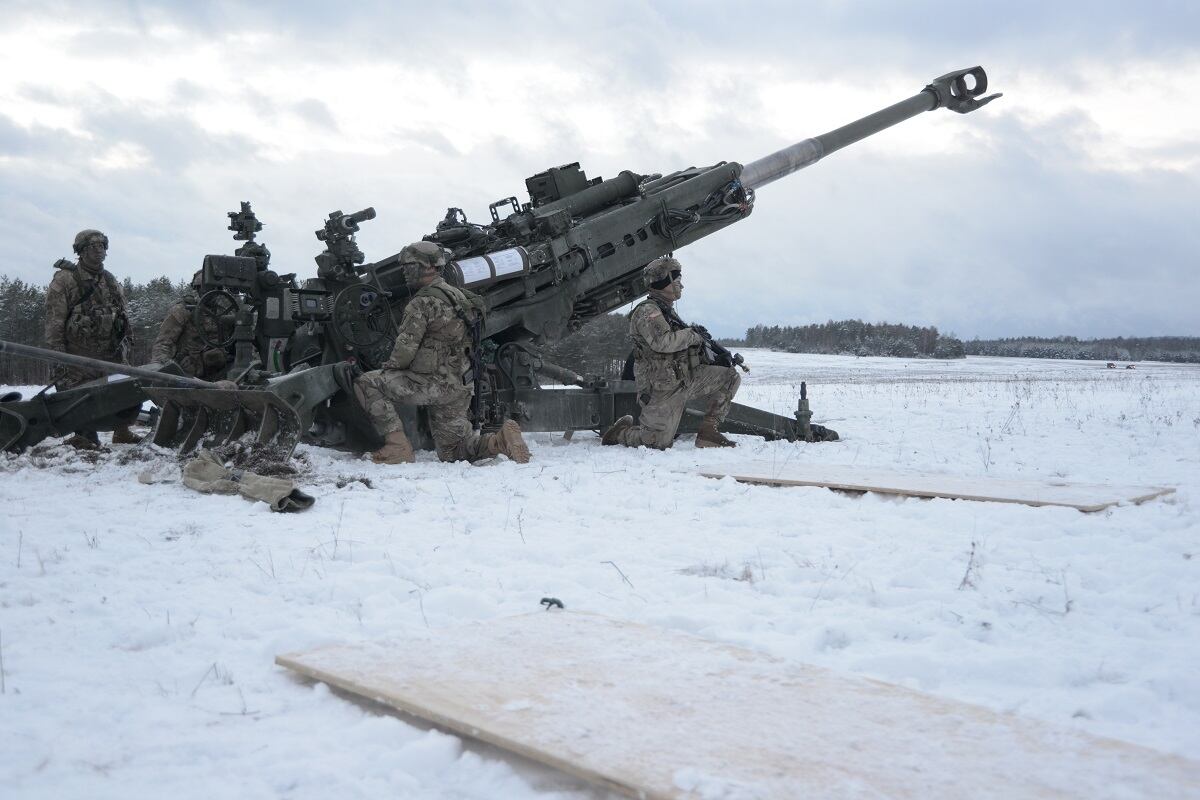WASHINGTON — The Army’s Rapid Capabilities and Critical Technologies Office, formerly known as the Rapid Capabilities Office, is undergoing more than just a name change, but rather a transformation at its core, the acting director of the organization told Defense News in a March 11 interview at RCCTO’s headquarters in the underbelly of the Pentagon.
When the office first stood up just a few years ago in 2016, it was tasked to chase after some high-priority capability gaps identified by combatant commanders in the field — namely electronic warfare, cyber efforts, and position, navigation and timing.
But now the RCCTO will focus on fielding complex technology as quickly as possible, said Col. John Eggert.
And with a name change and refined purpose, Army Secretary Mark Esper signed a new charter for the RCCTO on Dec. 20.
“Like the Army has gone through an evolution of its modernization enterprise, through the standup of the Army Futures Command, we have gone through a mini-transformation, evolving to better support the needs of the Army modernization enterprise,” Eggert said.
When the RCO was established, Army Futures Command wasn’t even a public whisper; but in the fall of 2017, the service announced that it would set up a new four-star command aimed at tackling its top modernization priorities to address future threats.
RELATED

The AFC reached initial operational capability down in its Austin, Texas, digs in the summer of 2018 and is shooting to reach full operational capability this summer under the command of Gen. John “Mike” Murray.
Under the AFC, the Army formed cross-functional teams focused on its top six priorities: long-range precision fires, next-generation combat vehicle, future vertical lift, the network, air and missile defense, and soldier lethality.
The RCCTO will tackle the focus areas on which the CFTs and program executive offices might be unable to focus, and develop technology that wouldn’t fall under a CFT or PEO, according to Eggert.
And the office is moving from a focus on what combatant commanders need in the field through urgent operational needs to what the AFC views as important development efforts needed to modernize the Army quickly.
The Army “needed an organization that could find and harvest emerging critical technologies from somewhere else where it was being developed, either another government agency or industry, academia, to be able to harvest that technology into an Army application and do it quickly,” Eggert said.
For example, Eggert said, hypersonics might be one of the priorities on which the RCCTO will focus.
While a list of priorities has not been issued to the RCCTO from the board that guides it — consisting of Army leadership — Army Under Secretary Ryan McCarthy said earlier this month that the RCCTO will first and foremost focus on hypersonics, space and directed energy.
The RCO was previously dedicated to rapidly building prototypes, Eggert explained, but now “we have gone into a much larger scalability to do programs from the very beginning of the acquisition cycle, so we can develop, we can deliver and we can deploy much larger-scale systems than we could under the previous charter.”
The changes the organization is undergoing actually didn’t just happen in December. Under the short-lived leadership of the previous director, Tanya Skeen, before she left to lead the F-35’s Joint Project Office, the RCO had begun a pivot to focus on the Army’s top modernization programs instead of a more narrow focus on EW, cyber efforts and PNT.
But the RCO didn’t abandon its efforts in those three areas and a few other efforts it picked up in the past year.
The RCO began work on long-range cannon development, modifying an M777 howitzer to extend the range without losing accuracy. Eggert said the RCO finished up modifications with the service’s armaments and ammunition project offices and is now focusing on enabling the system to achieve accuracy at an extended range.
RELATED

The RCCTO is also fielding one of the major projects it developed from its inception — an electronic warfare capability for U.S. Army Europe. The project was developed in response to an operational needs statement out of Europe to create a converged electronic support and electronic attack system.
“In effect, you can sense a signal of interest, for example. You can can do something about it and affect that signal of interest through a jamming capability,” Eggert said.
The office is finishing up the last pieces of kit in response to the operational needs statement, he added, and it just scooped up the highest acquisition honor awarded by the Office of the Secretary of Defense for the project, having fielded the system within 12 months.
The last major project — Dark Bridge — is a cyber capability that the RCCTO is testing for the Army. The system counters small unmanned aircraft systems. It recently completed soldier trials at the National Training Center and received “great feedback and had excellent results,” Eggert said.
The office is now building a second version that will have expanded capability through hardware and software for a specialized unit, likely in Europe first, and then to U.S.-based units.
The RCO also conducted a signals classification challenge last fall where competitors could develop an algorithm that would take a mountain of signal data and pare down the information to signals of interest, Eggert said.
More than 150 teams applied, and the service gave out three cash awards to the top teams.
The RCCTO is now in phase two of the effort, where it is weaponizing and operationalizing the algorithms developed during the challenge and putting them into tactical electronic warfare kit that is currently fielded, according to Eggert.
Once the kit itself is fielded, the RCCTO will set up a trial and take user feedback that will fold into a program of record.
Jen Judson is an award-winning journalist covering land warfare for Defense News. She has also worked for Politico and Inside Defense. She holds a Master of Science degree in journalism from Boston University and a Bachelor of Arts degree from Kenyon College.








